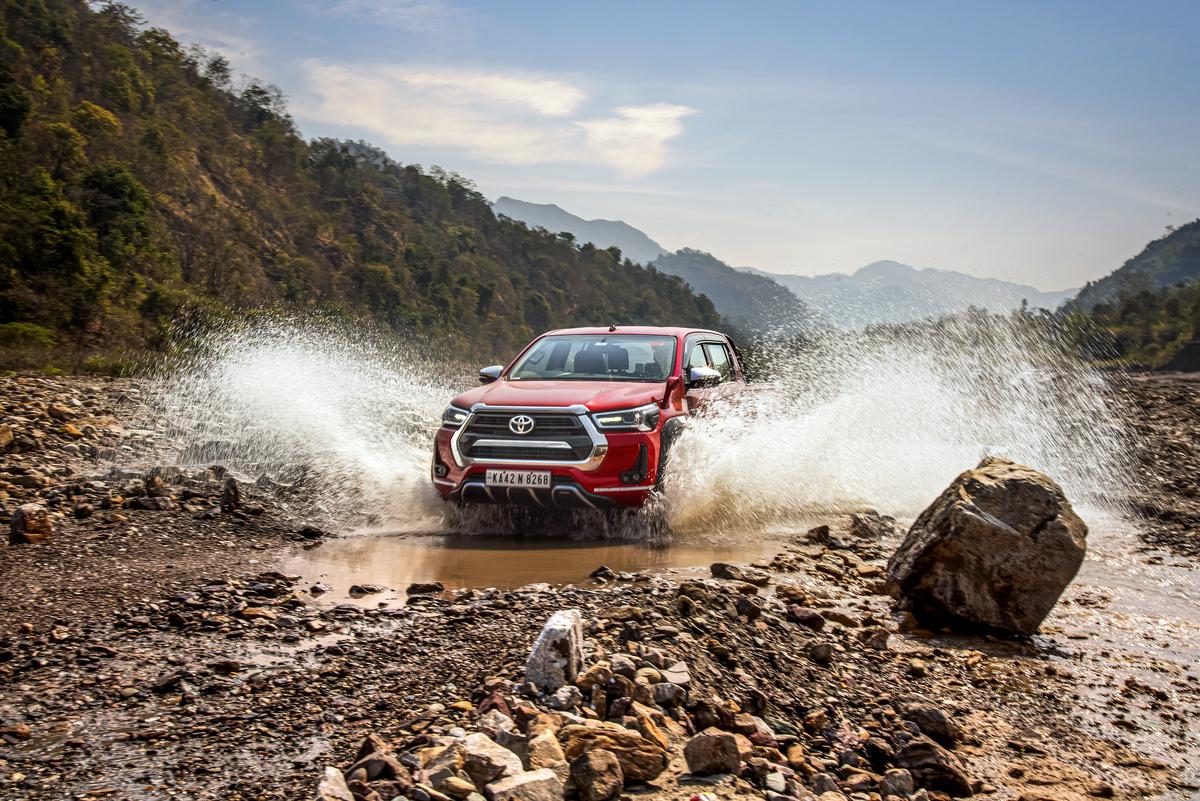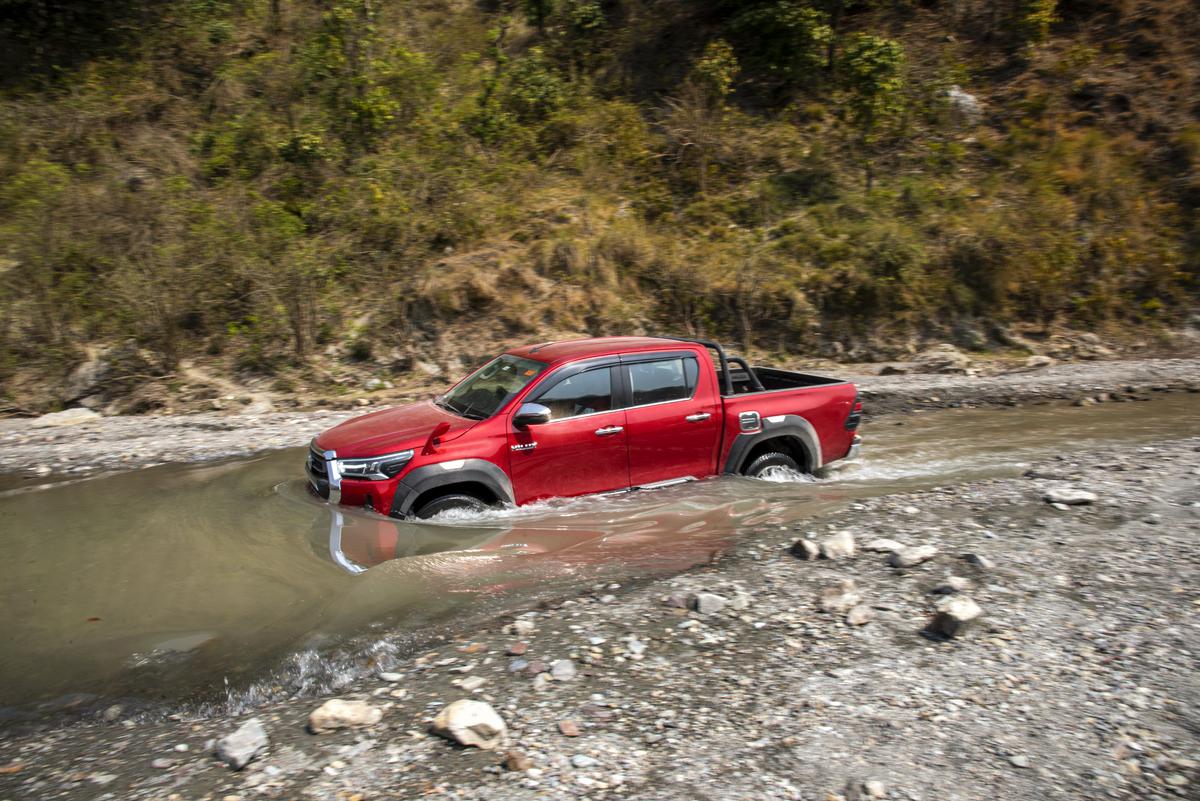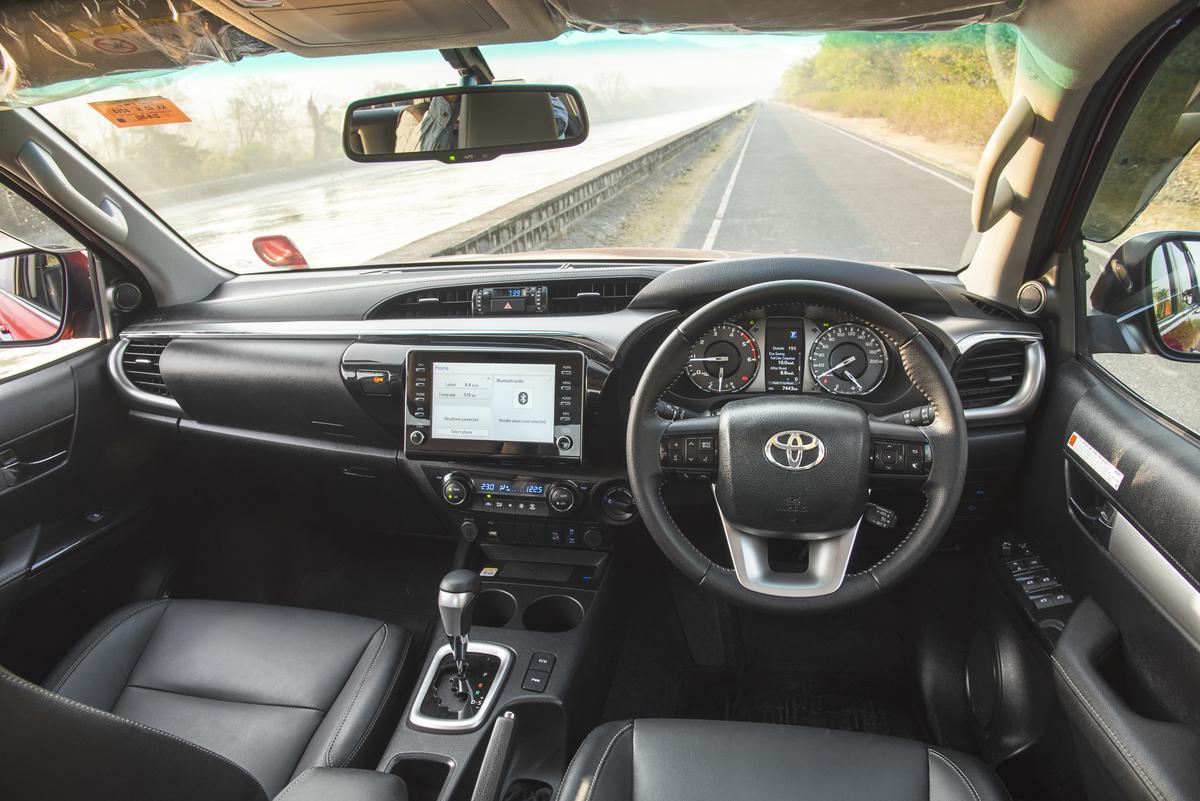When it comes to off-roading, the Hilux is built on a longer wheelbase at 3,085 mm as against the Fortuner’s 2,745 mm, and this, along with the extra rear overhang, reduces its effectiveness off-road.
Widely regarded as the toughest off-roader in the world, Toyota’s Hilux is nothing short of an icon. Universally revered for its solid construction, indestructible nature, and the fact that many will live long after we are gone, it is a legend unto itself. “Tested and honed,” the Hilux is nothing less than the automotive equivalent of an AK47 – both effective and unbreakable at the same time.
Having put the Hilux through our paces in cities and on the highways, we know what the ride feels like. But how does it feel to drive in the woods on a real off-road trail? In a rough terrain where 4X4 is needed, is it any different from its sister SUV Fortuner?
Though both are built on the IMV platform and the Hilux shares its chassis with the already strong Fortuner, it is different and also much more robust. This is especially true for ladder-frame chassis. The longitudinal rails are bigger and wider, the longer rear end is more sturdily built and the chassis also gets more rigid cross members, for added strength and bending stiffness.
When it comes to off-roading, the Hilux is built on a 3,085 mm long wheelbase as against 2,745 mm for the Fortuner, and this, along with the extra rear overhang, reduces its effectiveness off-road. So while the approach angle is 29 degrees (good off-roaders have about 30), departure is now 26 degrees. These clearance angles, and the fact that there’s no lockable front differential, mean the Toyota should manage climbing, rock crawling and general off-roading with ease.

Where the Hilux has an off-road advantage is the ‘live’ rear axle and leaf-sprung suspension. This combo allows for better axle articulation during more demanding angles, and what helps is that it gets an electronic limited slip differential in the rear, low range, and rear differential. In addition, there is hill-descent control and VSC or electronic stability control.
Our opportunities to test the Hilux off road were limited to a custom-built set of courses. Yet the experience was enough to show us just how indestructible off-road it feels.
The first off-road test for the Hilux is a steep climb on some broken ghat roads with lots of sand and gravel on some steep slopes. We got a chance to see how well the rear manages, especially when there is no load on the driven wheels. While the truck’s shape is evident on tight sections, what’s impressive is that cutting traction control doesn’t hinder speed. The 500Nm of torque from the engine makes climbing easy, and the Hilux’s 204hp diesel makes a whirring noise at around 2,000rpm, but remember this pick-up weighs around 2.3 tonnes.

Ahead was a long descent down a rocky river bed. Despite the long wheelbase, the Hilux took to it like a duck to water. It has a ground clearance of around 220mm and set in four low, it crawled smartly over smooth river rocks, clambering up like a large reptile as it heaved itself up certain sections. It’s important to get the Hilux down gently on some big boulders, but otherwise it manages an impossible task in a lesser off-roader with ease.
Later, we got to test the Hilux’s ability to wade in 700mm of water as it crossed a deep stream with relative ease. If you’re serious about wading through a lot of currents this can be easily progressed by donning a snorkel. The Hilux manages even steep climbs on gravel surfaces with ease; The power, torque and low-range traction make it quick enough that you’ll need to go around yourself to climb up.
So clearly, while the Hilux isn’t quite as capable as a dedicated off-roader, it’s still just as capable as a full-size SUV, ramp over and departure angle apart. Driving it across terrain like this will make you want to load up your tent, kayak, off-road bicycle, dirt bike or quad and head into the wild.
While the Hilux feels like it’s in its element on rough stuff and that’s great if you have an outdoorsy lifestyle, it feels a bit ‘over-specified’ for everyday roads and regular use. The biggest issue is the leaf spring rear. The ride is bumpy, bumpy and restless, and the leaf springs rear often swings you around. Once you get used to the extra length, though, it feels very similar to the Fortuner.
The steering is a bit heavy but the torque and response from the motor are perfect for creating gaps in traffic and what you will enjoy is the commanding driving position and ability to intimidate other traffic. However, taking a U-turn and parking is another matter entirely; Remember this truck is 5.3 meters long… more than a meter longer than the Hyundai Creta. Also, the quality of the plastics on the black-on-black cabin isn’t great and the cabin feels more utilitarian than specified for a car that costs under ₹37 lakh (ex-showroom). Isuzu’s V-Cross is around Rs 10 lakh cheaper. You get a fair amount of kit and what makes it practical is that you can seat four in relative comfort.

Still, the main appeal of the Hilux is that it’s an off-roader with the ability to carry an unlimited amount of cargo—almost half a ton if you push it. This, unlike any other off-road vehicle currently on sale, makes it a more practical option that you can use to enjoy the great outdoors. Toyota also offers a number of optional extras such as deck lids and covers for the loading bay, and this gives the Hilux added flexibility. There is no doubt that the Hilux is quite attractive; So yes, while you obviously want one, do you really need one? This is a more difficult question to answer.